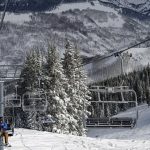Ignoring vocal opposition from Alaska natives,
scientists and sportsmen, the U.S. Government opened the Teshekpuk Lake Special Area for oil leasing in Northwestern
Alaska. The decision repeals the last remaining protections for critical waterfowl and big game habitat around Teshekpuk Lake, protections first established by Reagan administration Interior Secretary James Watt who is
not usually noted for conservation achievements. The final plan threatens to strike a significant blow to wildlife populations and hunting opportunities in Alaska and across the nation.
“It is clear that this administration cares much more about doing favors
for the oil industry than conserving wildlife for future generations,” said
Betsy Goll, Sierra Clubs Alaska Regional Representative. “Even James Watt
protected Teshekpuk Lake, yet the Bush administration cant deem one acre
of this magnificent region worthy of protection.”
The Teshekpuk Lake area is one of unparalled big game and waterfowl
habitat. One in four of the worlds population of Pacific black brant
utilize the area. Approximately 37,000 black brant, 30 percent of the
entire population, utilized the Teshekpuk Lake area for molting in 2001.
Other waterfowl that rely on the area include lesser snow geese,
white-fronted geese and long-tailed duck that find critical nesting and
molting habitat in the Lakes environs. Spectacled and Stellers eiders,
both listed as “threatened species” under the federal Endangered Species
Act, use the area for nesting. Big game species found in the area include
the 45,000-member Teshekpuk Lake Caribou Herd that provides a subsistence
hunting base for the remote communities of Nuiqsut, Barrow, Atqasuk and
Wainwright as well as sport hunting opportunities.
BLMs draft plan, released in June 2004, elicited more than 220,000
comments from across the nation with the vast majority opposed to oil
drilling in the area. Other federal agencies, including the U.S. Fish and
Wildlife Service, also raised concerns.
“This is a shortsighted decision that places efforts to conserve waterfowl
for future generations at risk,” said Bart Semcer, the Sierra Clubs Fish
and Wildlife Policy Specialist in Washington, DC. “If initiatives like the
North American Waterfowl Management Plan are going to succeed, public lands
like those around Teshekpuk Lake need to be conserved as vigorously as
partnerships on private land.”
Congress and three Secretaries of the Interior have recognized the
ecological importance of the area around Teshekpuk Lake. Former Secretary
of Interior James Watt closed an area of more than 200,000 acres north of
Teshekpuk Lake to oil and gas leasing. In 1998, Interior Secretary Bruce
Babbitt established an oil and gas leasing plan for the northeast Reserve,
which protected much of the sensitive habitat around Teshekpuk Lake from
leasing or oil and gas facilities.
In early 2004, the Bush administration announced its intent to alter the
1998 plan, and in June 2004 the BLM released a draft plan that proposed
opening 96 percent of the entire Northeast Planning Area to oil leasing. In
statements delivered in a gathering including extractive industry leaders
in Anchorage last week, BLM Alaska Director Henri Bisson acknowledged BLMs
plan to dismantle long-standing rules that had set core wildlife habitats
in the area north of Teshekpuk Lake off limits to drilling since the Reagan
administration.
“Despite the administrations spin, 100 percent of the Teshekpuk Lake area
will ultimately be open to oil leasing, and not a single acre will be
permanently dedicated to conservation. The bottom line is that one of
North Americas best remaining waterfowl habitats will be fragmented by
roads, pipelines, air strips, gravel mines and industrial sprawl,” said
Goll.












